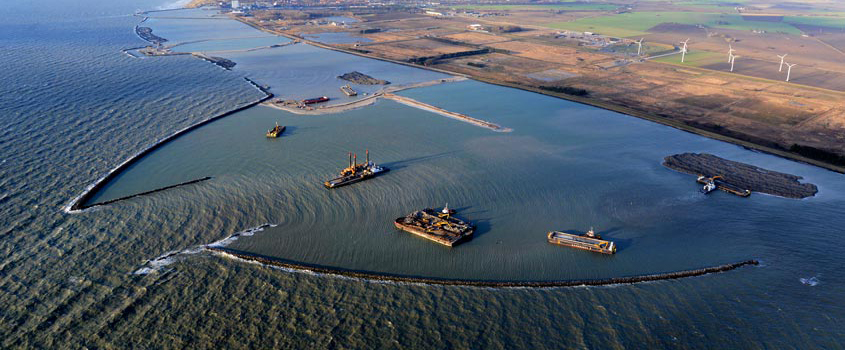The Femern Tunnel – a groundbreaking tunnel between Germany and Denmark
Copyright: Femern A/S
3 March 2021 - Projects update and handover - Denmark
The Femern, a road and rail immersed tunnel, is being built 40 metres below the surface of the Baltic. At 18 km long, the tunnel is set to be the longest of its kind in the world.
VINCI Construction Grands Projets, leader of the work packages for the tunnel and the production plant where prefabricated segments will be built, is part of the Femern Link Contracts (FLC) joint venture carrying out the project – along with Per Aarsleff Holding A/S (leading contractor for the tunnel’s access ramps), Soletanche Bachy International (VINCI Construction), CFE, Dredging International NV, Wayss & Freytag Ingenieurbau AG, Max Bögl Stiftung & Co KG, BAM Infra and BAM International. Work started in January 2021 and the project will, at its peak, employ no less than 2,000 workers!
Bringing the German and Danish coasts closer
After project handover in 2029, people will be able to travel between Puttgarden – located at the tip of Fehmarn (the German island that is the tunnel’s namesake) – and the Danish port of Rødby in just 10 minutes by car, or 7 by train. No longer will travellers have to choose between a 160 km drive or a 1 hour ferry trip!
While a certain number of people currently choose to fly between Copenhagen and Hamburg, this tunnel will make the train a promising alternative – not only for environmental reasons, but also by bringing the journey time down from 4 and a half hours to just 2 and a half.
This new infrastructure will produce twofold benefits, enhancing road connections between the Mediterranean region and Scandinavia while enabling faster road and rail transport of freight between Scandinavia and central Europe. By creating a rail link, the tunnel will provide a more environmentally friendly form of transport and inject momentum into trade between these regions, particularly the import and export of goods.
Copyright: Femern A/S
A technical and technological challenge 40 m underwater
The tunnel stands out from others – such as the Channel tunnel, another project where Group teams were involved in the construction over 30 years ago – as it won’t be dug; rather, it will be positioned along the seabed.
Its different sections will be formed of prefabricated concrete segments. But it’s not a first for VINCI; the Group already used this technique as far back as between 1995 and 2000 to build the Øresund immersed tunnel, connecting Denmark to the Scandinavian peninsula.
But this time, the sheer scale of the project is unprecedented – 89 segments, each 200 m long, will be towed and submerged, then assembled in a trench 40 m underwater.
The operation will involve a sequence of careful manoeuvres; to achieve them, the teams have developed solutions to meet these record dimensions, including a major innovation.
The segments will be transported by a catamaran that has been specially designed to carry their full weight – almost 73,000 tonnes! – as well as their varying dimensions, in a real feat of mechanical engineering.
Before the segments are submerged, they will be placed on a bed of gravel that will form the foundation. Divers cannot intervene this far down, so a self-powered robotised forklift, controlled remotely, will carry out the task.
Follow the project on the YouTube channel of Femern A/S, the public company in charge of the project.
Subscribe
Media contacts
Stéphanie Malek
Tel: +33 1 57 98 66 28
media.relations@vinci.com






